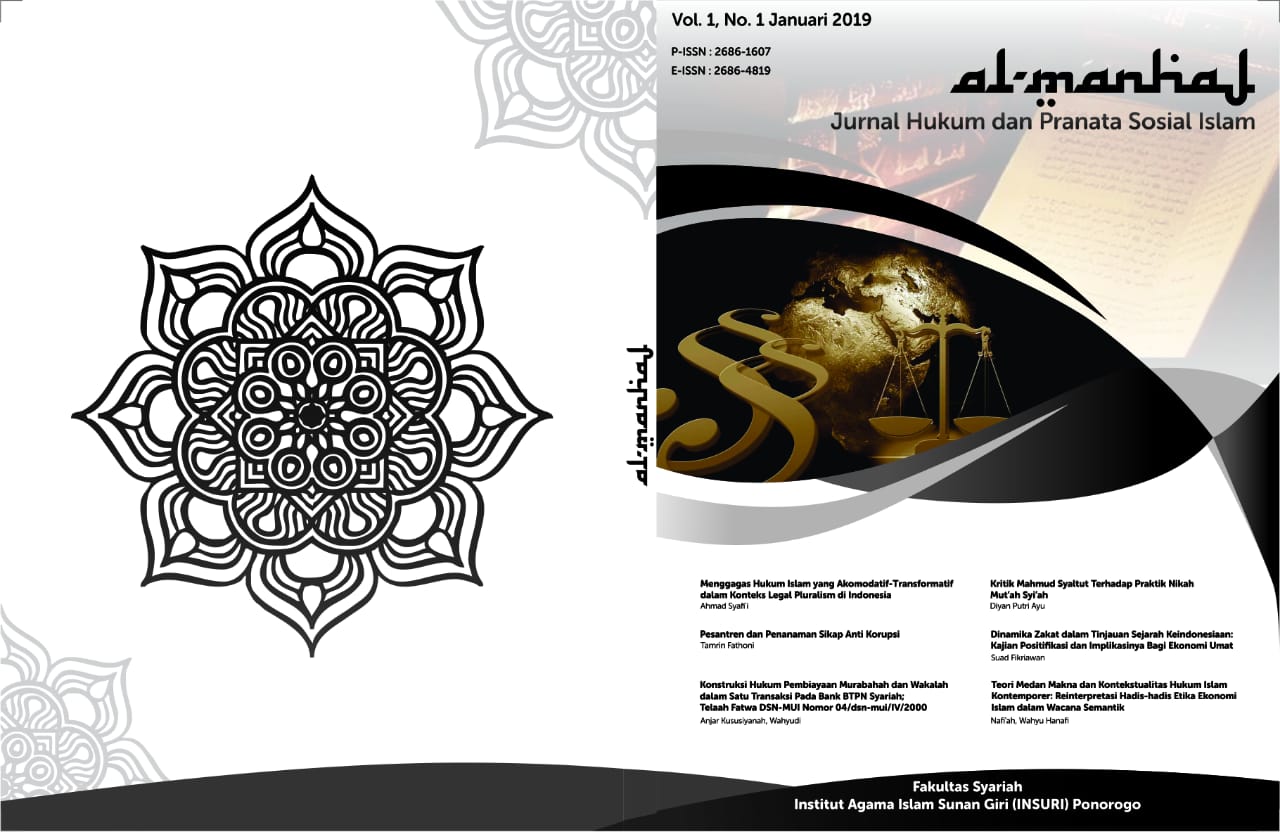TEORI MEDAN MAKNA DAN KONTEKSTUALITAS HUKUM ISLAM KONTEMPORER: REINTERPRETASI HADIS-HADIS ETIKA EKONOMI ISLAM DALAM WACANA SEMANTIK
DOI:
https://doi.org/10.37680/almanhaj.v1i1.111Keywords:
Semantics, Hadith, Islamic EconomicAbstract
This study aims to describe the actualization of semantic field theory in the reinterpretation of the hadiths of Islamic economic ethics. This research uses descriptive interpretive method. Actualization of semantic field theory can be explained when want to know the meaning of a word then must know the meaning of the word associated with the previous word. If viewed from the nature of the semantic relationship, then the words are grouped into a semantic field divided into 1). sintagmatic 2). set field (paradigmatic). The results of this study explain 1). Hadiths about Islamic economic ethics narrated by Ahmad and Abu Dawud with the word focus "syafā'at". contains the meaning of "mediator of goodness". The meaning of this "intermediary of goodness" is obtained through the formulation of the syntagmatic field, namely to comprehend a series of semantically interconnected words such as "double and rescue" meaning. Semantically terminology, the meaning of the word hadith is "Whosoever intercedes for a good to his brother, then he is rewarded and received, then he has come to a great door of the doors of usury. 2). Hadith about Islamic economic ethics narrated by Muslims. The word focus of the hadith is the word "gharar" which is semantically interpreted by "deception". The meaning of "deception" is obtained through the formulation of the syntagmatic field, namely by understanding the meaning of words that are still relevant to the word "deception", such as the word "unclear, and syubhat". In semantic terms, the meaning of the hadith is "Rasulullah Saw forbade buying by throwing stones and buying fraud. 3). Hadiths about Islamic economic ethics that Bukhori maintains. The focus word of the hadith is "Najsyi" which is semantically interpreted as "deceiving". The meaning of "deceiving" is derived from the paradigmatic field formulation, ie by understanding the relationship between elements at a certain level and other language elements such as "unclean, dirty, and disease" meaning. In semantic terms, the meaning of the hadith is "That the Messenger of Allah forbade buying by way of deceiving".
Downloads
Published
How to Cite
Issue
Section
License
Copyright:
- Author retains the copyright and grants the journal the right of first publication of the work simultaneously licensed under a Creative Commons Attribution 4.0 International License that allows others to share the work with an acknowledgment of the work's authorship and initial publication in this journal.
- Author is able to enter into separate, additional contractual arrangements for the non-exclusive distribution of the journal's published version of the work (e.g., post it to an institutional repository or publish it in a book) with the acknowledgment of its initial publication in this journal.
- Author is permitted and encouraged to post his/her work online (e.g., in institutional repositories or on their website) prior to and during the submission process, as it can lead to productive exchanges, as well as earlier and greater citation of the published work (See The Effect of Open Access).
License:
-
Attribution — You must give appropriate credit, provide a link to the license, and indicate if changes were made. You may do so in any reasonable manner, but not in any way that suggests the licensor endorses you or your use.
-
No additional restrictions — You may not apply legal terms or technological measures that legally restrict others from doing anything the license permits.
You are free to:
- Share — copy and redistribute the material in any medium or format
- Adapt — remix, transform, and build upon the material for any purpose, even commercially.

This work is licensed under a Creative Commons Attribution 4.0 International License.














